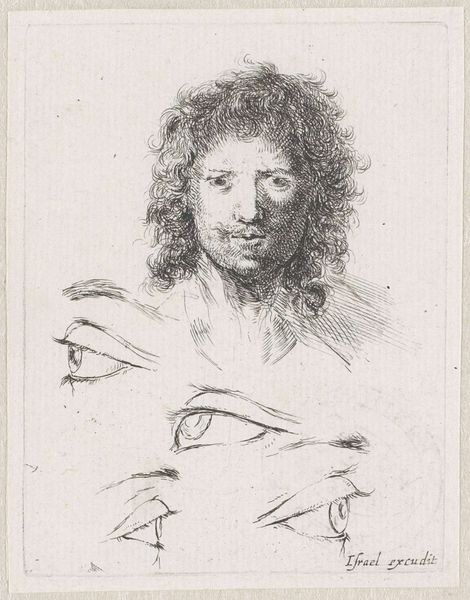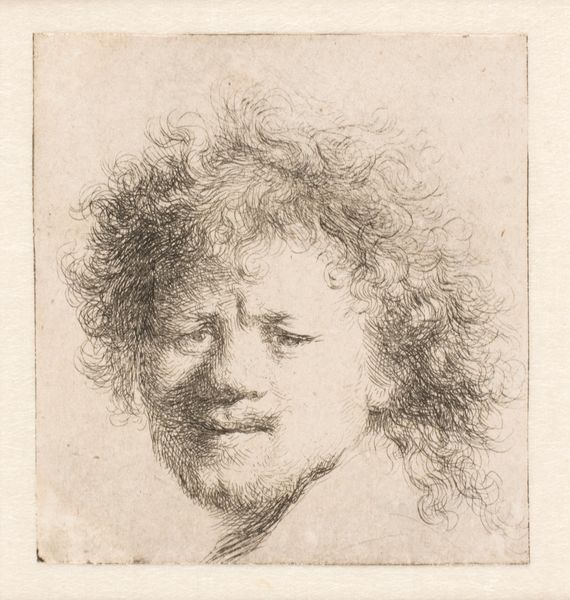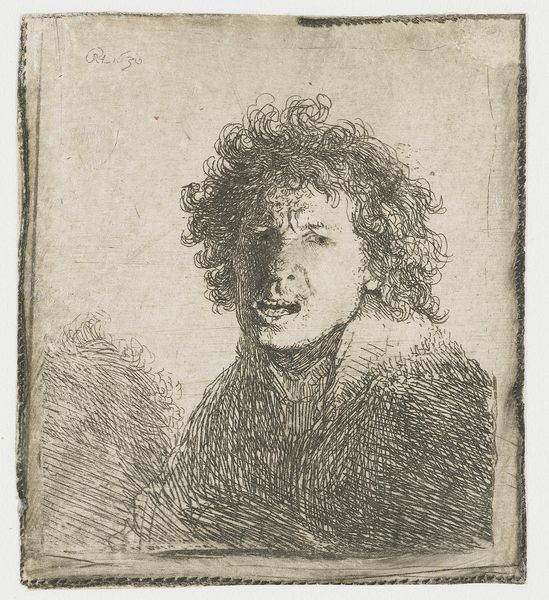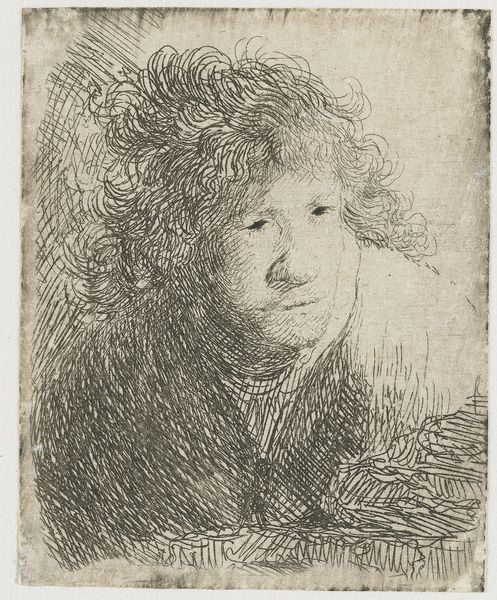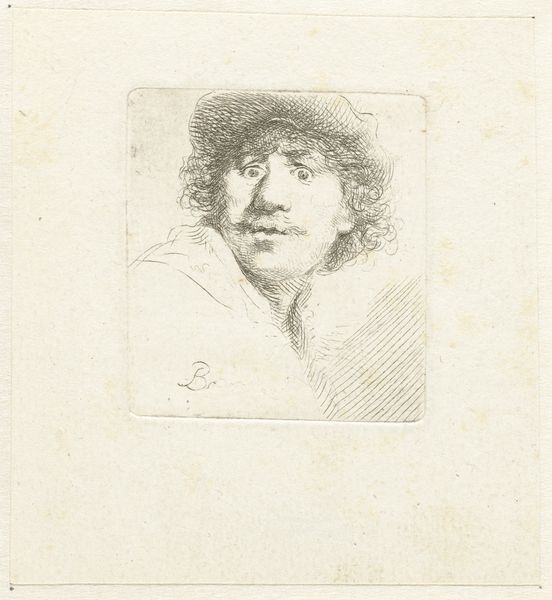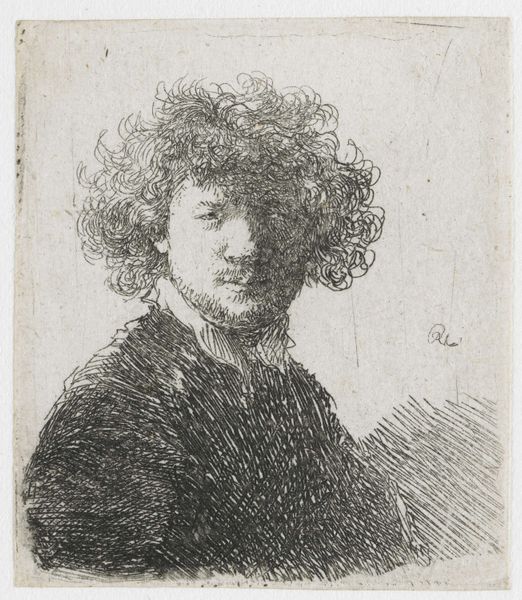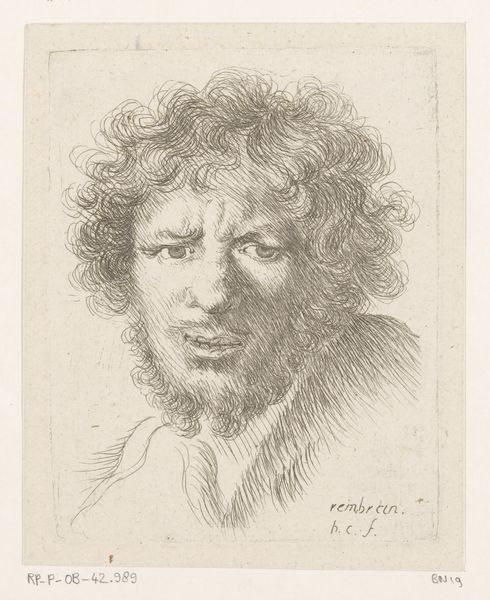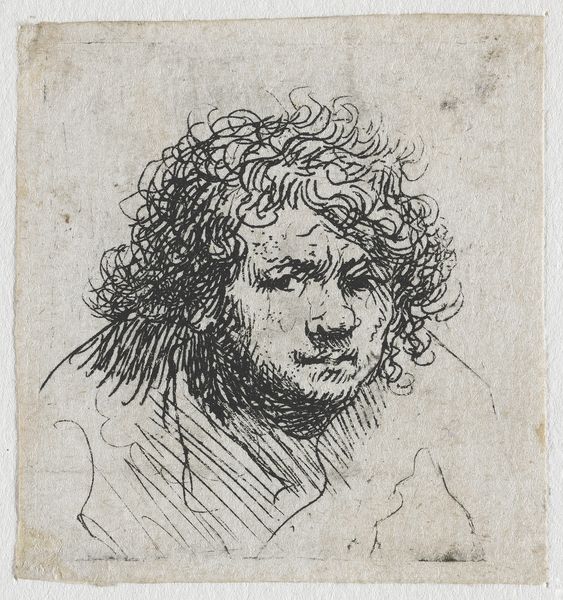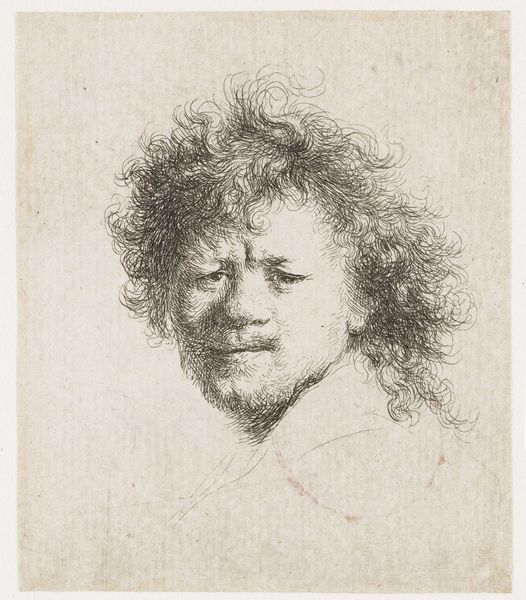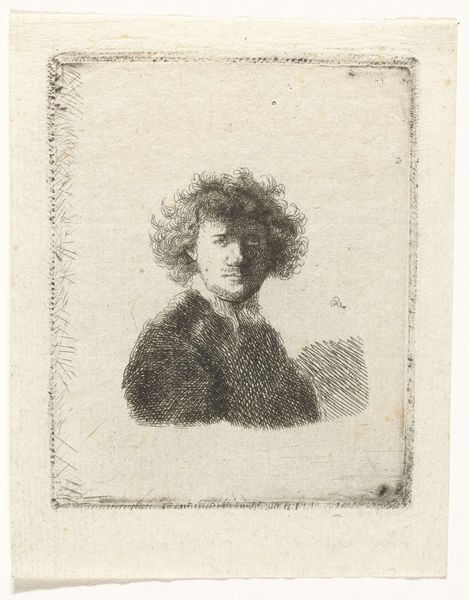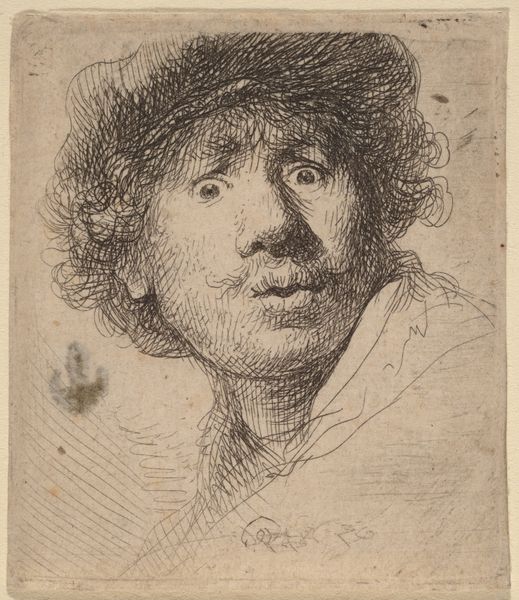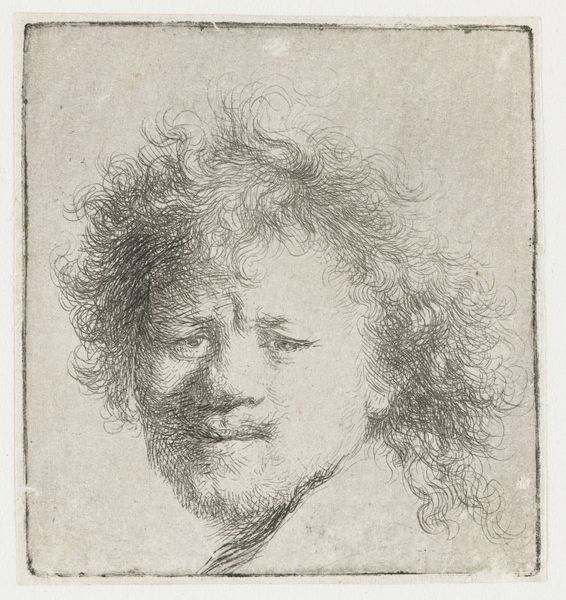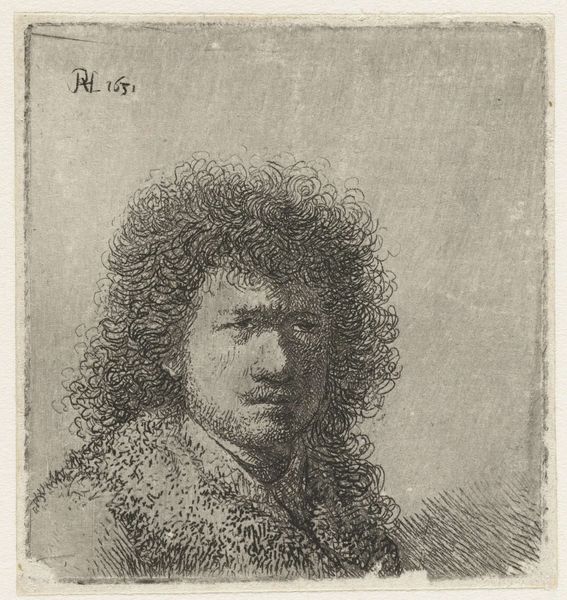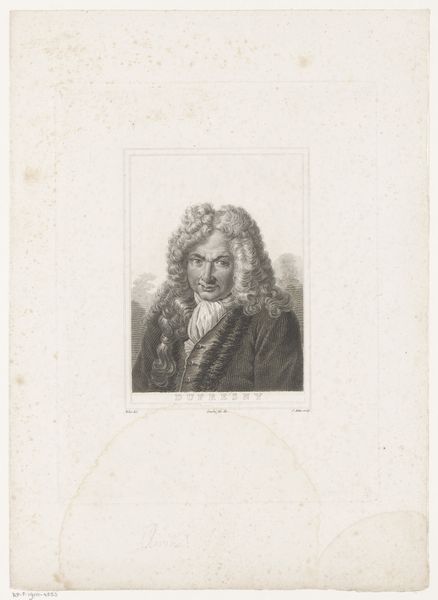
Plate 2: at top, the head of a young man, frontal view, at bottom, four eyes, from 'The Book for Learning to Draw' (Livre pour apprendre à dessiner) 1647 - 1652
0:00
0:00
drawing, print, etching, engraving
#
portrait
#
drawing
# print
#
etching
#
pencil sketch
#
engraving
Dimensions: Sheet: 3 5/16 x 2 1/2 in. (8.4 x 6.3 cm)
Copyright: Public Domain
Stefano della Bella created this etching called 'Plate 2' as part of his 'Book for Learning to Draw'. It's a how-to guide to art. But it's also a product of its time. Made in Italy, it reflects the period's renewed interest in classical ideals. During this time, art academies became increasingly influential. They standardized artistic training, emphasizing technical skill and adherence to established aesthetic principles. We see this in the image’s focus on mastering the fundamentals of drawing—the human face, the nuances of the eyes. The very existence of such a book speaks to the growing professionalization of art. As art historians, we might ask: How did institutions like academies shape artistic production? What social function did these images serve? Resources such as period documents, treatises, and biographies of artists can help us understand the relationship between art, institutions, and society. It's through this approach that we can see how art both reflects and shapes its cultural context.
Comments
No comments
Be the first to comment and join the conversation on the ultimate creative platform.
